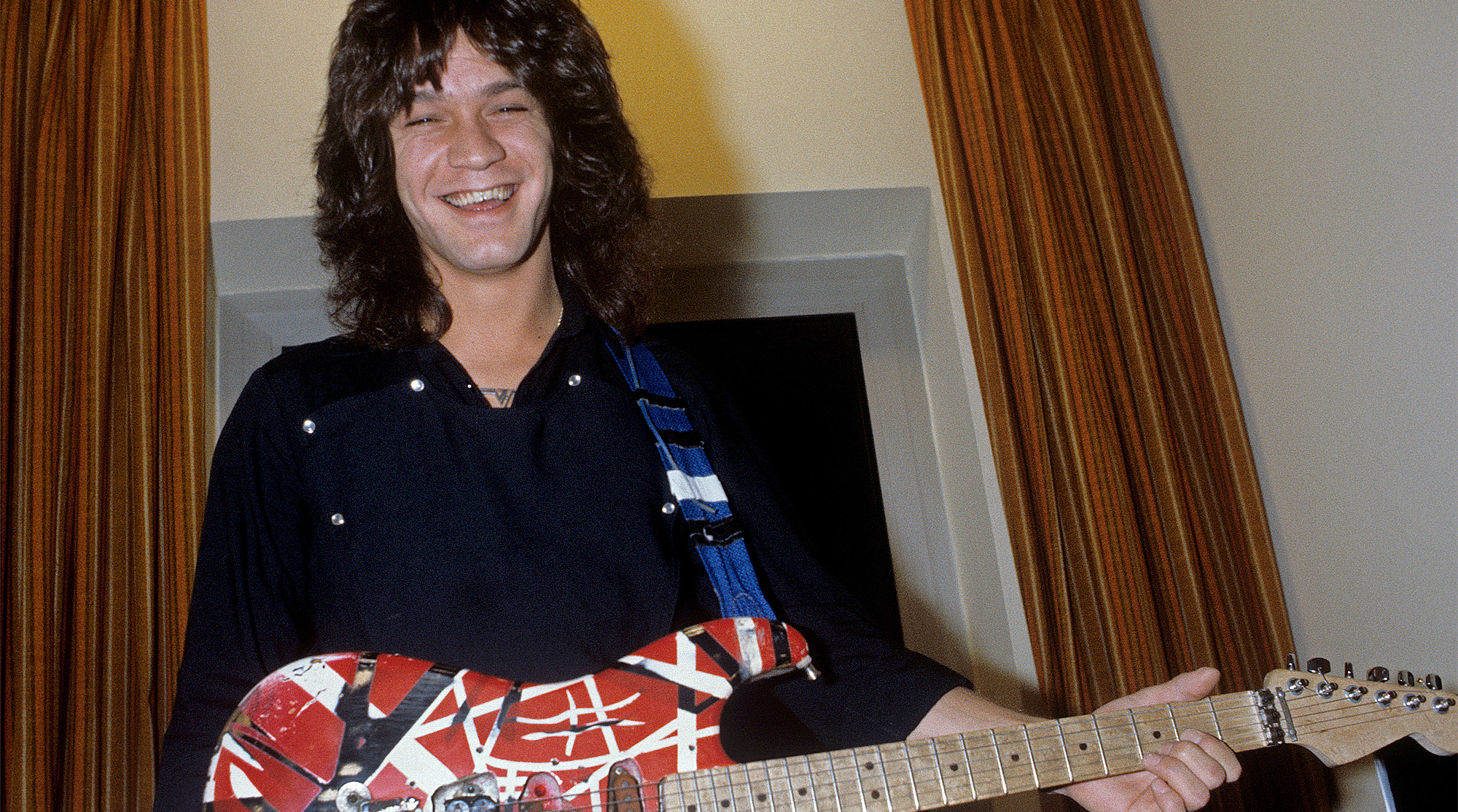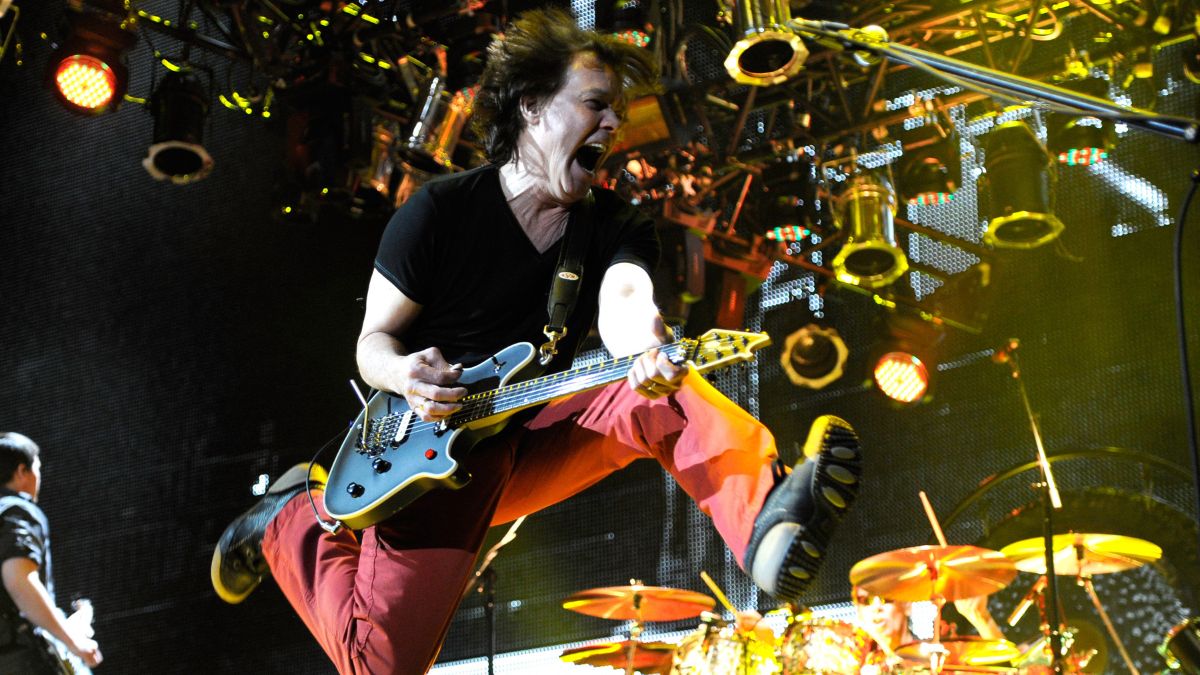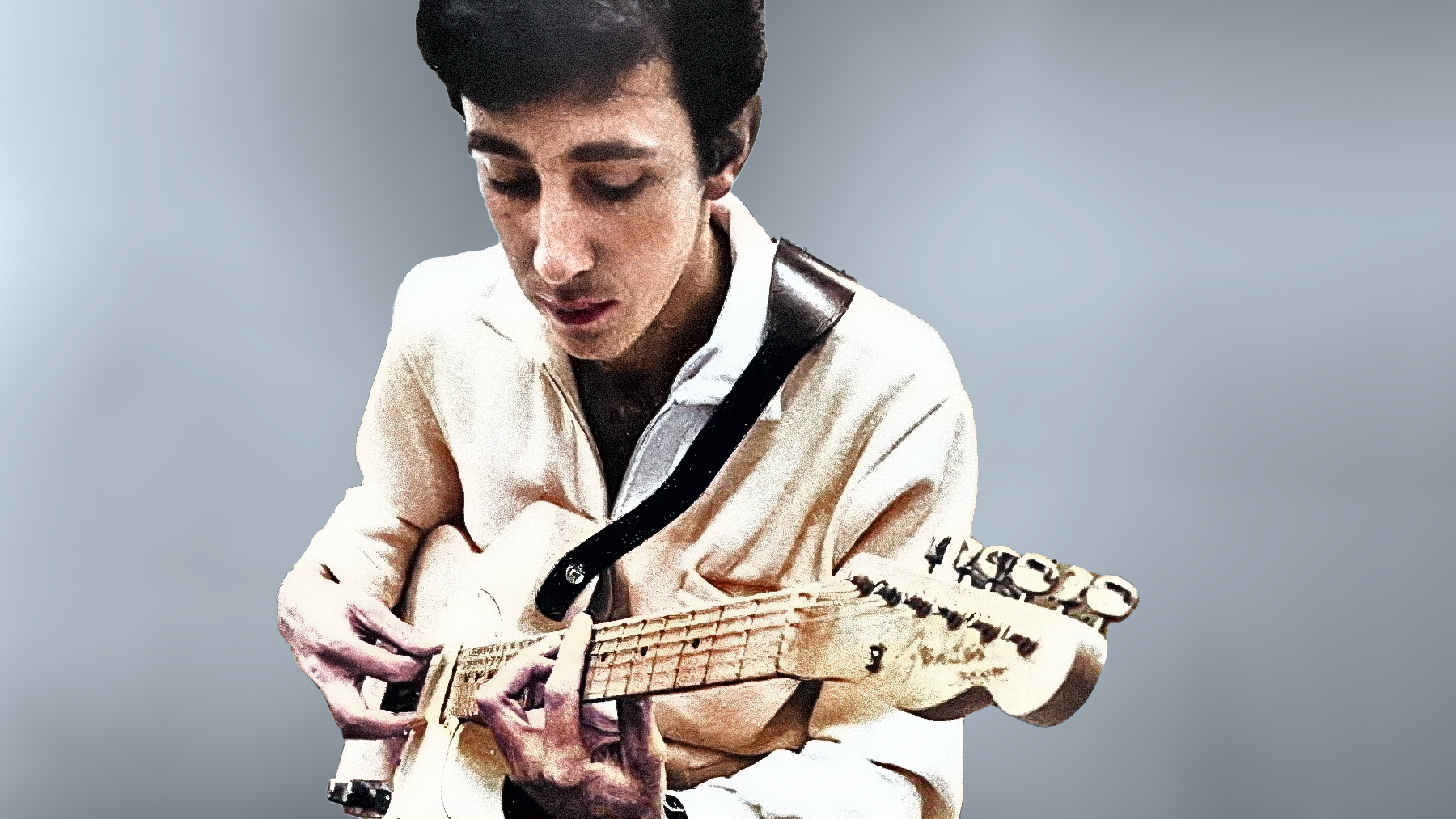“He would play the part with all these nuances and squeals. On its own, it was perfect.” Why didn't Eddie Van Halen double-track his guitars? Recording engineer Ross Hogarth explains how he worked with the virtuoso
Hogarth broke an unspoken rule to make way for tonal play time. The results paid off in spades

Five-time Grammy winner Ross Hogarth has a rich recording résumé, having worked with Edgar Winter, Def Leppard, Mötley Crüe, Dweezil Zappa and John Fogerty before being hired for Van Halen's final album, 2012's A Different Kind of Truth.
In a new interview, Hogarth has reflected on his time working with Eddie Van Halen and revealed how his way of tracking albums differed from most guitarists.
“Most of Ed's records are not double tracked, because he would play the part with all these nuances and squeals,” he tells the Agartha Podcast.
With so many little details populating Eddie's perpetually unpredictable playing, nailing double takes proved an impossible task.
“Guitar players, when they know they're going to double the guitar, simplify their part so they don't have to worry about learning every little nuance,” he continues. “To have to double that is incredibly time consuming, and as human beings, it's almost impossible to be perfect.
“If you try to double it, you can hear all the imperfections, whereas on its own, it's perfect.”
Hogarth knew when he took on Van Halen's album what the gig would be like and who ruled the roost.
All the latest guitar news, interviews, lessons, reviews, deals and more, direct to your inbox!
“I know that you don't come into a Van Halen record and tell Eddie, ‘Well, here, this is how we're going to do it.’ You come into Ed's world and you see what he's doing.
“He wasn't using ribbon mics — he was using one cabinet, he had two Shure SM57s, and he split them, and he would delay them a little differently. So it wasn't a dedicated analog bounce of stereo left and right.”
Despite the fact that Ed had his methods mapped out, Hogarth decided to throw him some new ideas, knowing what fun it would bring if he said yes. Noticing that the guitarist used a splitter to divide his signal across multiple tube amps and cabs, he made his pitch.
“I said, ‘You've got this splitter here that you use for live shows. Do you want to try messing around?’”
Ed was game. And because recording was taking place at Van Halen's studio, 5150, all his gear was on tap.
“We started by using two heads and two cabinets with the SM57s, and he already started to like that because that's like a natural stereo, because speakers don't move absolutely perfectly,” he explains. “So the left and right speakers were doing this little stereo air dance.

“I said, ‘You've got all these choices. Just for me, can we pull out the old Marshall,'" Hogarth asked, referring to the 1967/68 Marshall 1959 Super Lead used to track the band's first six albums. "And some of your old gear? And we started having a really good time blending two amps.”
The engineer had another trick up his sleeve.
“Eddie was looking for bottom,” he says. Recognizing the Shure SM57s' lack of low end, Hogarth suggested trying a new tube ribbon mic he was creating with Royer, which would come to be known as the R-122V. It captured plenty of detail as well as the low end Ed was seeking.
“Ed, God rest his soul, was an incredible engineer on his own. He was amazingly intuitive,” Hogarth says. “I'd watch him sitting there listening to playback, turning the Royers up and down, and he's starting to really get off, because they were bringing natural low end.
“It was bringing in a whole other midrange frequency that made the guitar really start to speak. He totally understood it within five minutes, and he was like, ‘Fuck yeah!’”
I said, ‘You've got all these choices. Just for me, can we pull out the old Marshall and some of your old gear?
— Ross Hogarth
Hogarth was also on hand to help troubleshoot an issue that came up due to a change in the band's personnel. With Michael Anthony out and Wolfgang Van Halen in, they had to accommodate a new bass guitar tone for the first time.
“Ed wanted to make space for Wolf's bass, too,” Hogarth says. “It's a much grindier bass sound than on prior records. He comes from '90s and 2000s alternative music bass sounds, so I'd move the guitars a little wider using a time adjuster," a device that allows engineers to manipulate the timing of the audio signals.
The record would prove to be the swan song for EVH, who passed away eight years later. A Different Kind of Truth topped multiple charts on its release and has sold 40,000 copies worldwide.
In related news, Eddie's lifelong friend has said the guitarist was a “complex” character, revealing how he learned to read his friend's quirks. And an unheard interview has come to light, revealing a peculiar anti-shred stance from the guitarist.
A freelance writer with a penchant for music that gets weird, Phil is a regular contributor to Prog, Guitar World, and Total Guitar magazines and is especially keen on shining a light on unknown artists. Outside of the journalism realm, you can find him writing angular riffs in progressive metal band, Prognosis, in which he slings an 8-string Strandberg Boden Original, churning that low string through a variety of tunings. He's also a published author and is currently penning his debut novel which chucks fantasy, mythology and humanity into a great big melting pot.



